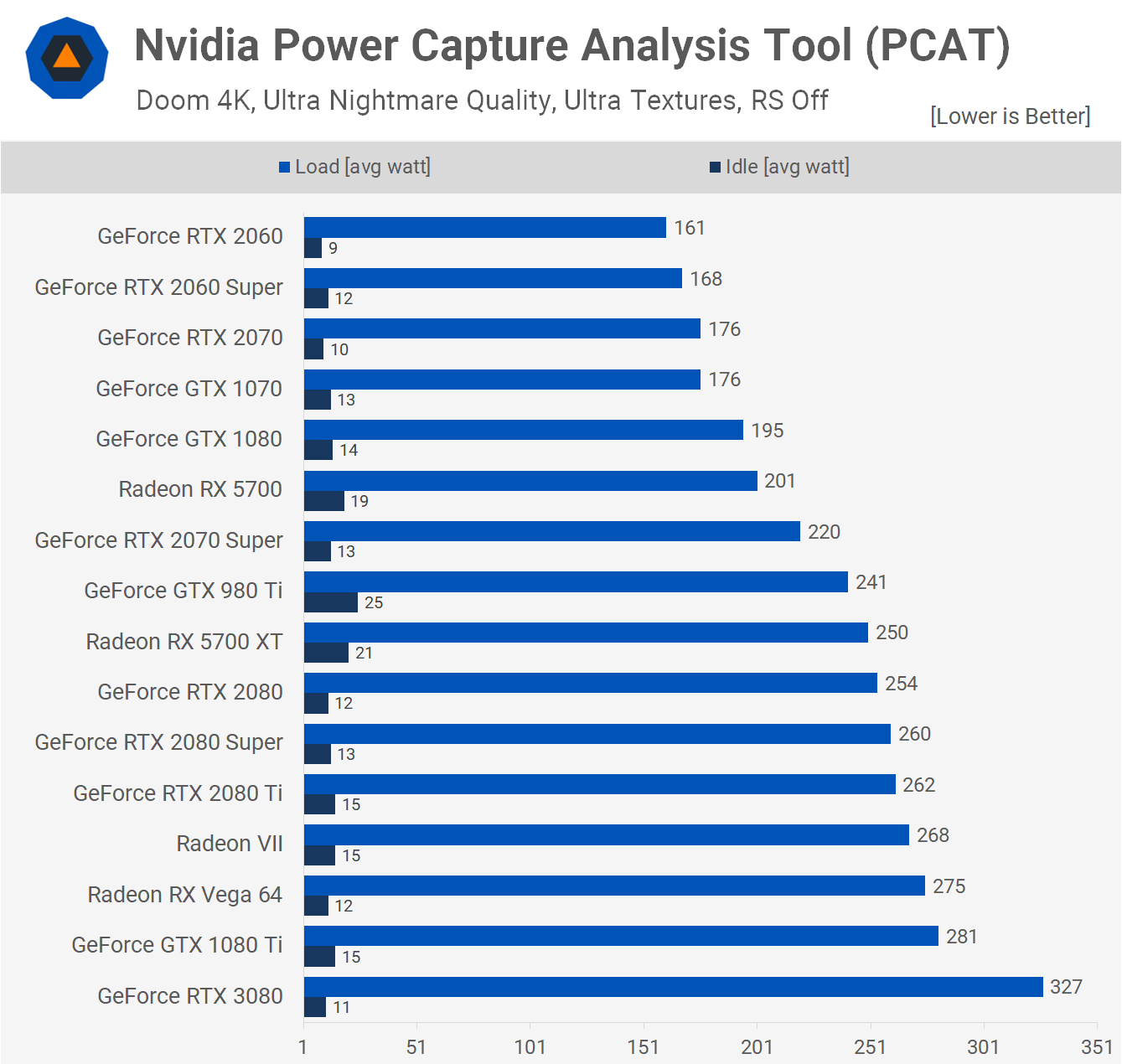Jawed
Legend
Well, I wouldn't call little over 10% worse perf per watt "shitty"

from:
https://www.techspot.com/review/2099-geforce-rtx-3080/
250W versus 262W, 2080Ti is ~40% faster in Doom Eternal at the settings used for this comparison. 5700XT is supposed to be a 225W card.
When AMD uses 5700XT as the baseline for "performance per watt comparisons" in the slides for Navi 21, I hope everyone's ready with extra salt. Gamers Nexus has very similar power consumption for 5700XT.



